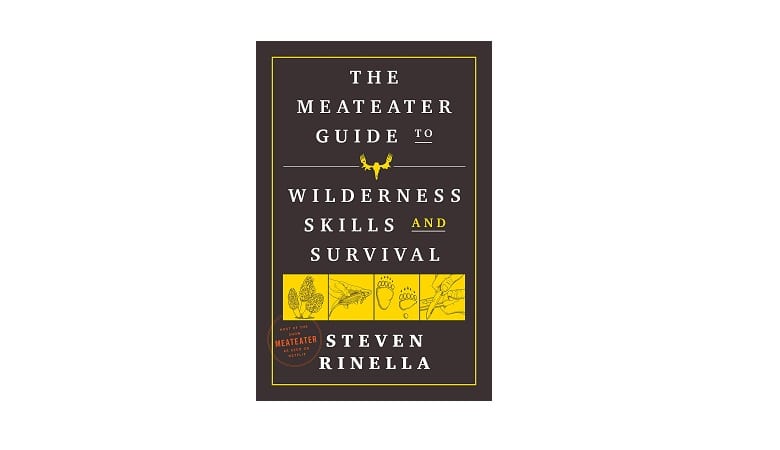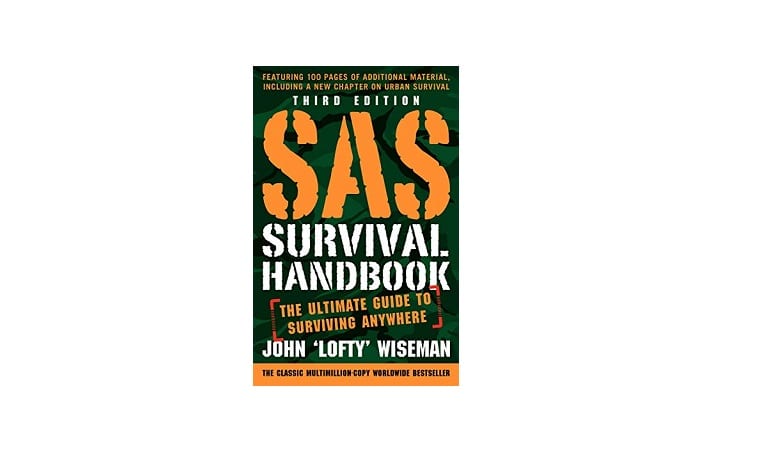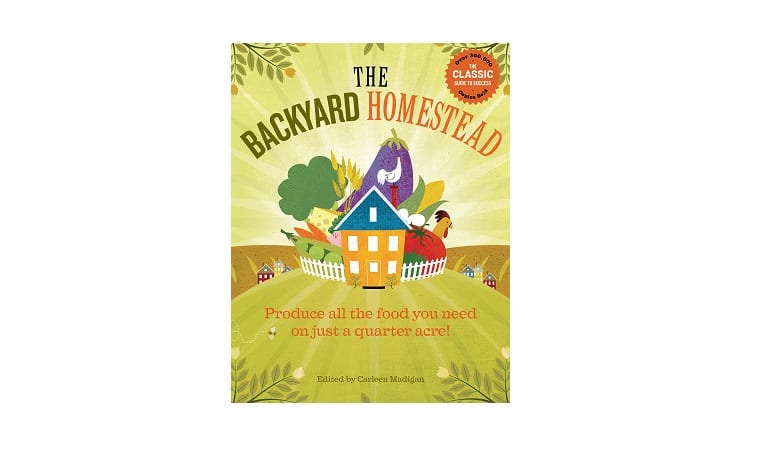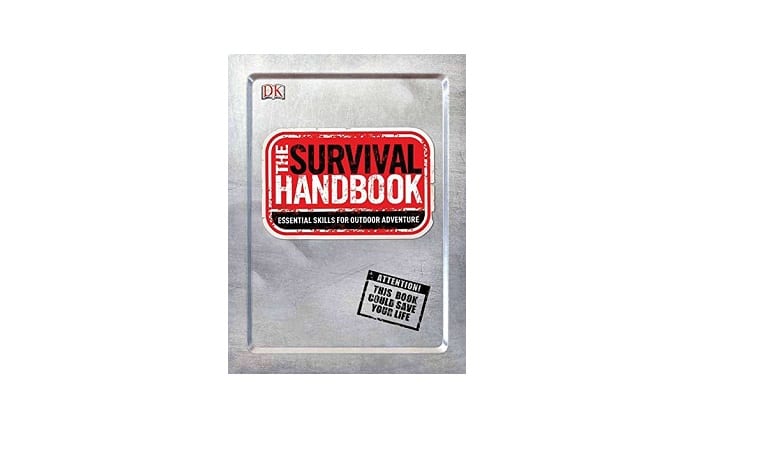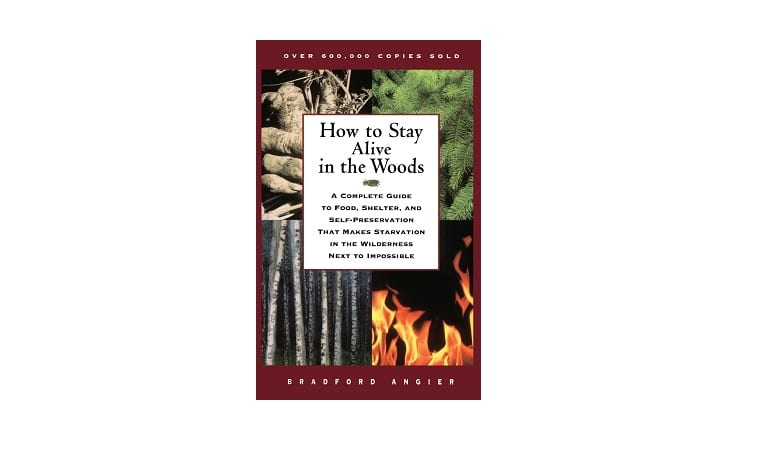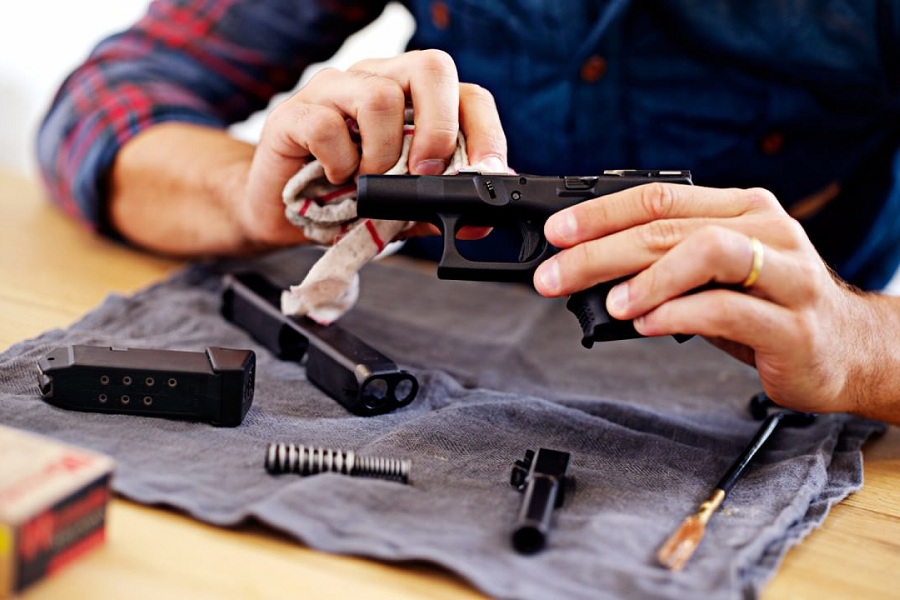No survival enthusiast can live or survive without an essential survival book on his/her bookshelf. You might find information about several aspects online, but there is no single resource with everything in one place.
Survival books help you survive in difficult situations or prepare you for the end of a world scenario.
These books will stay will you on your journey, unlike the online resources you cannot access in the wilderness. Having few books that educate you with in-depth knowledge is the first step towards survival learning.
These books are your last hope in an emergency, so choosing the correct book as your companion in your survival journey is crucial.
Below we have the top five best survival books of all time that you should consider buying. Let’s read to find out who is in the 1st position on our list.
Best Survival Books – Reviews & Buying guide for 2021
BEST OVERALL: The MeatEater Guide to Wilderness Skills and Survival
- Author: Steven Rinella
- Publisher: Random House
- Pages: 464 pages
- Weight: 1.3 pounds
- Dimension: 6.13 x 0.93 x 9.19 inches
- Publication date: December 1, 2020
The MeatEater Guide to Wilderness Skills and Survival’s author is Steven Rinella, a writer, and outdoorsman. He is a host for a television show and podcast that focuses on wildlife survival.
He has written few other books about hunting in the wilderness and butchering.
This book is one of the best urban survival books you can get your hands on. Let us dive and look at why this book secured our list’s first position.
Pros
- The meat-eater guide to wilderness and survival is on the N.Y bestseller list. A quote from their review says, “An indispensable guide to surviving everything from an extended wilderness exploration to a day-long boat trip, with hard-earned advice from the host of the show MeatEater as seen on Netflix.”
- The book comes in paperback, spiral-bound, and on Kindle.
- If you purchase the Kindle version, the book will provide few useful additional links that can come in handy in all situations.
- Besides giving information about survival, Steven Rinella adds fun and personal element by sharing personal stories and funny features that liven up the book.
- The medical information section is nicely covered, and you would find valuable information that other books might overlook upon.
Cons
- This book heavily focuses on the American wilderness, and you will find this book inadequate if you want information and tips for other parts of the world.
- Few readers have had several printing issues, and some readers have received an upside-down printed copy of their book.
- The meat-eater guide to wilderness and survival lacks illustrations, making this book much blander.
Close your eyes and buy this book if you are new to survival learning. Young scouts can read this book to gain good introductory knowledge.
Old adventurers can read this book for the experience stories and “bulls*it alert” section, which is funny and entertaining.
RUNNER UP: SAS Survival Handbook
- Publisher: William Morrow Paperbacks
- Pages: 672 pages
- Weight: 2.04 pounds
- Dimension: 8.05 x 6.2 x 1.2 inches
- Publication date: November 11, 2014
SAS Survival Handbook’s writer is John Wiseman, who has made the efforts to provide the readers with the 3rd edition of this book, adding a few extra helpful pieces of information.
The urban survival section is why we encourage buying this edition.
The SAS Survival Handbook covers a wide variety of topics that will help you even when you are away from the woods. Let us study a few pros and cons of this book to understand why it is in the 2nd place.
It consists of various topics like Essentials, Strategy, Climate and terrain, Food, Camp craft, Reading the signs, On the move, Health, Survival at sea, Rescue, Urban survival, and Disasters.
Pros
- The outdoor magazine says, “A classic outdoor manual [that] addresses every conceivable disaster scenario. Don’t leave home without it”.
- The 3rd edition of this book has added extra pages of urban hazards.
- One unique thing about the SAS survival handbook is the option of carrying it in your bag. They provide another waterproof version, laminated which even folds like a map. You can have these pocketbooks with you while you are outdoors; they take very little space and provide excellent resource help.
- This book covers many areas and includes different scenarios starting with surviving at sea. The book will teach you everything you need to know before heading out of doors.
- Many readers consider the SAS survival handbook their survival bible.
- This book comes in paperback, spiral-bound, and you can read it on Kindle too.
Cons
- Apart from being one of the best survival books non-fiction has ever seen, it lacks some factual correctness.
- Some extra visual aids would make the book more reader-friendly and easy to understand.
If you are looking for a fantastic book to pack in your bug-in or bug-out bag, this is the one. Consider buying a standard version for your home, and never forget to buy and keep a handy book in your emergency bag.
ALTERNATIVE: The Backyard Homestead
- Author: Carleen Madigan
- Publisher: Storey Publishing, LLC
- Pages: 368 pages
- Weight: 1.54 pounds
- Dimension: 7 x 1 x 9 inches
- Publication date: February 11, 2009
The backyard homestead: Produce all the food you need on just a quarter acre! It is a hearty book written by Carleen Madigan.
This book will provide you with ample information about homesteading and off-grid living, focusing mainly on food. Please read the review to determine why this book has ranked the 1st runner-up in our best survival books list.
Pros
- Boston Sunday Globe says, “This book delivers what it aims to sell. Its 368 pages of information on creating a successful, self-sufficient backyard homestead that will keep you and your family busy and eating all year long. 4.5 out of five stars, this is the book homestead enthusiasts have been looking for. Go buy this book!”
- This book sheds light on various topics such as What to pack and wear, what food items you need to carry, the importance of having an ample amount of water with you all the time, ensuring your safety, among other things.
- The backyard homestead is not a survival book for an emergency but for those who want to make wilderness their home. This book teaches about different strategies to start your homestead farm who wish to live off-grid.
- This book is a good read for people who have dyslexia as the bold callouts during important points make reading easier.
- The publication has lots of books under different series that will cover all your bases to start a perfectly functioning homestead. Few titles are under The Backyard Homestead Seasonal Planner, The Backyard Homestead Book of Kitchen Know-How, The Backyard Homestead Book of Building Projects.
Cons
- The main con is the author’s views because the book has many sections where the author has stitched excerpts from other resources.
- This guide will not give you full or complete information that you might need for homesteading.
This book will help you learn how to get the most from fresh food, in addition to food preservation techniques and all about homestead cooking.
It includes vegetable-cheese-bean dishes, breakfast, poultry- meat dishes, desserts, and baked goods.
This book will do you good if you are a beginner starting with off-grid living and eager to know and understand gardening on your own.
The backyard homestead is a perfect coffee table book for light reading.
ALTERNATIVE: The Survival Handbook
- Author: Colin Towell
- Publisher: DK
- Pages: 320 pages
- Weight: 2.1 pounds
- Dimension: 7.5 x 0.73 x 10 inches
- Publication date: February 20, 2012
The Survival Handbook is the best survival book by Colin Towell. The book has all the necessary survival information and detailed illustrations that make the content easy to grasp.
Let us look at all the pros and drawbacks to avoid book-buying confusion.
Pros
- The survival handbook is a very nicely put-together book that educates you on all essential topics without overburdening you. This book covers all the bases in great detail.
- The survival handbook: Essential skills for outdoor adventure is a second edition, so you are guaranteed to find the latest new information for your survival learning and practice.
- One notable feature of this survival book is the illustrations. This book has pictures and drawings of all the necessary and vital points. Each page of this book has colorful illustrations, flowcharts, tables, gear lists, etc. The book gives you all the essential information with good viewing pleasure.
- The book and language style is very kid-friendly, and they will love to read the book. Even if kids flip the pages casually, they are bound to get some knowledge while perusing.
- This book comes in a hardcover and paperback version.
Cons
- One basic con of this fantastic book is that readers cannot carry the book in their backpack because of the size. The book seems to be a good option for at-home library viewing.
- Few readers expected a little extra information about identifying plants and building survival traps.
Among the contents of this book include Camp craft, Taking shelter, Water and food, In an emergency, and First aid, among others.
We highly recommend buying this survival book to introduce outdoor survival to kids. They will get hooked because of the pictures. The survival handbook is a great book to have in your collection of survival books.
ALTERNATIVE: How to Stay Alive in the Woods
- Author: Bradford Angier
- Publisher: Touchstone
- Pages: 288 pages
- Weight: 8.6 ounces
- Dimension: 4.19 x 0.9 x 7 inches
- Publication date: March 2, 1998
How to stay alive in the woods is written by Bradford Angier, known and celebrated for his writing style and flare. The book provides some excellent information that you can use even today.
Let us look at the pros and cons and our buying advice to know more about the book.
Pros
- This book has four parts: sustenance, warmth, orientation, and safety. Each piece expands and covers so much that you might need to sit with a highlighter to highlight the basics.
- This book is excellent if you plan on a trek and want to live and experience living in the woods.
- This book is one of the best-selling survival books since 1998. How to stay alive in the woods was published on March 2, 1998.
- The hardcover of this book has colors and illustrations.
- Author Bradford Angier has a way with words that make this non-fiction book enjoyable as a fiction book.
Cons
- The paperback version has text and does not include pictures or illustrations.
- You might find a few lines or techniques old because Bradford Angier wrote this book in the 90s.
You can consider buying this book if you plan to survive in the woods. As the book does not cover other scenarios, you should stick to this book only if you want to learn about sustaining in the forest.
Survival Books FAQ
What are the 5 basic survival skills?
You should know the five basic survival skills: fire, shelter, signaling, food+water, and first aid.
Fire
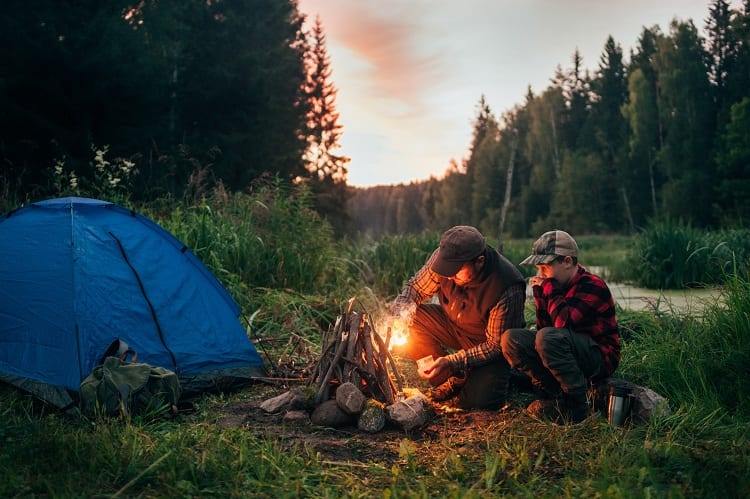
Fire is an essential skill that you need to learn to survive in the wilderness. Fire will keep you warm, keep the predators away, make you feel comfortable, and works as an excellent signaling tool.
Knowing and starting a fire is the first step that you should always follow when stuck in the wilderness.
Shelter
The shelter should come on the second number on your priority list. The shelter will protect you from the harsh climatic conditions, predators and keep your body temperature steady.
Your clothes are your first shelter, and your living shelter is your second shelter. A lean–on shelter is the most basic and easy shelter you can make with the available natural resources.
Signaling
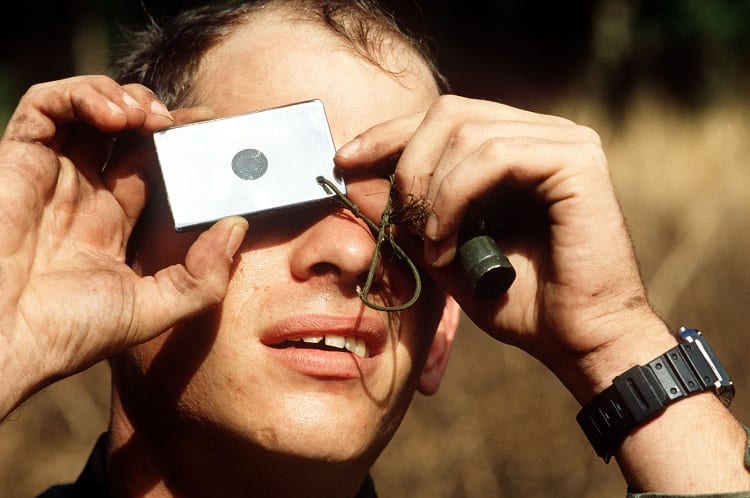
If you are in a forest or any dangerous area, your best bet to survive will be if someone rescues you. Fires, mirrors, flashing lights are some of the best signaling materials.
You can write SOS on the floor but make sure the trees are not covering the sky. Signaling will make it difficult for the rescue team to see you.
Food and water
You will get weak if you do not eat and drink water regularly. Your dehydration chances increase if you intake less water than your body requires. You can find food anywhere if you are smart enough.
Hunting, fishing are some of the ways you can find food. Eating plants and fruits is another option, but you need to know which plants are safe and poisonous.
First aid
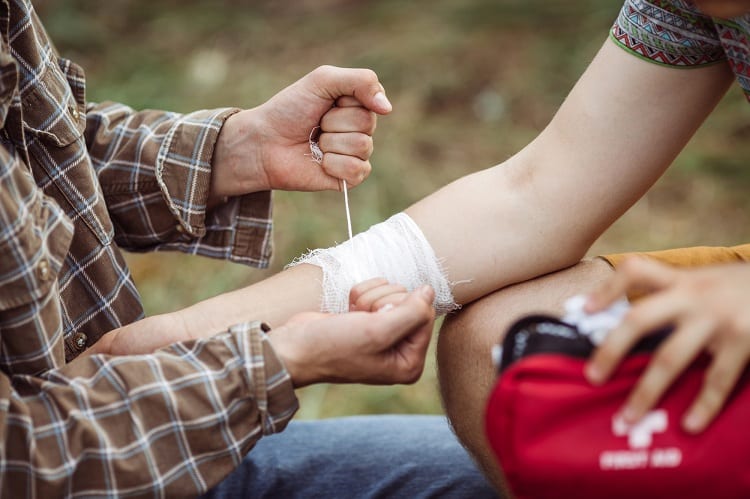
Having a decent first aid kit and knowing how to perform first aid is extremely important for survival.
Always carry a small, neatly packed first aid kit with all the essentials like painkillers, needles, anti-bacterial liquid, gauze, etc. If you do not have any first aid kit, you should know how to use nature to treat yourself.
You should know how to perform CPR and Heimlich maneuver to save other people’s lives.
How do you survive in the woods?
Surviving in the woods is one of the easiest and one of the hardest things to do as compared to sustaining in the snow and desert. You have an ample amount of resources at your disposal.
You should always follow the first five essential things to do, i.e., fire, shelter, signaling, food+ water, and first aid; if you have arranged all these five essentials, your chances of survival increase by 50 percent.
Always stay clear of wild animals and do not think they are harmless even if they are small. Keep your observant eyes and ears open at all times. Conserve your energy and eat at night to increase the body’s temperature.
Keep yourself hydrated and keep your body energetic. Nights can be challenging, so make sure you do not sleep all day to sleep easily at night. Fire will provide excellent warmth and protection while sleeping.
Always cook before you eat and boil water to stay safe.
Keep your base at such a place where a rescue team can see you. If you feel no one is coming, you can start walking and following the river’s path. Finding a flow will lead you to civilization.
Make sure you mark your way if you find a dead-end; coming back to the camp will be accessible in that case. These are some of the primary points you can keep in your mind while trying to survive in the woods.
Can you legally live in the forest?
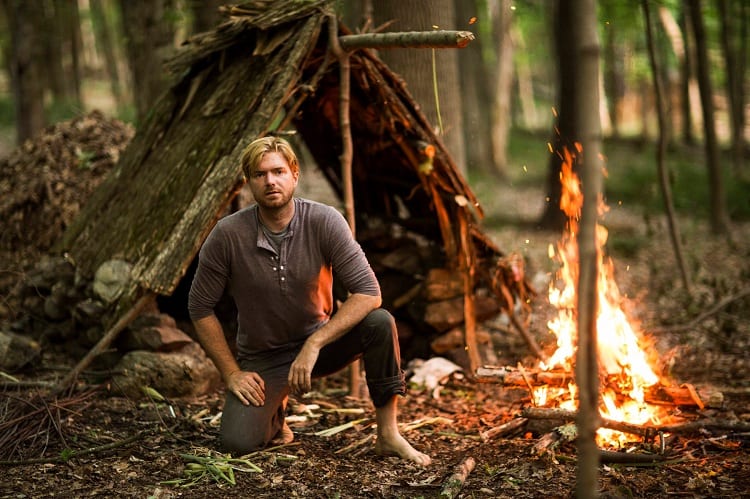
The answer is no, you cannot, but people have a loophole that lets them live in the forest. Technically speaking, you cannot start living in a forest as the government and big corporations mainly own it.
They would consider that you are trespassing, and you can go to jail under the charges of trespassing. However, you can live in the forest if you are camping.
Parking RVs and campervans are not encouraged, but you can legally stay there as long as you are not making it your permanent residence. Few forests have 15 days, and few even have 30 days as their limit.
People who want to stay and live off-grid usually keep changing their place every few days. You can move up further to the north or cross few kilometers to enter a new district.
Several boondockers do this, and they make a circuit keeping in mind that they do not return to the same place again in that year.
If you are curious about living outdoors like this, you can check this document with all the forests’ camping limits. Living legally in the woods is attainable if you follow the forests’ rules and comply with the different areas’ general laws.
If camping is not a feasible option, you can try buying a little piece of land, but that will require lots of connections and documentation.
Can you survive with just a knife?
You can survive with just a knife, but it is not the ideal thing to do. If you want to sustain and only have a knife with you, you can use it to do many things. You can collect wood and small branches for the fire.
Use the knife as a fire starter, rub a stone ( flint is the most ideal), and create sparks that will help you light the fire. You can build a shelter by cutting wood and leaves with your knife.
You can hunt and go fishing with your knife too. After hunting, you can easily use the knife to cut, skin, and clean your food with it. You can dig with your knife to find groundwater.
The knife will also protect you when it comes to self-defense. Build different tools and weapons with a knife for smooth hunting. A knife will work great as an SOS device.
You can stand straight to the sun and move your knife in such a way that the sunlight hits the blade. This technique will cause reflection, and a search team or rescue team will find you.
Yes, you can survive with a knife as your only tool but do this if it’s vital. Carry lots of essential things that will help you sustain and keep a survival book with you to refer and survive even the most challenging wilderness easily.
Conclusion
That’s it for this article. Survivalism takes emergency preparedness to a new level and regularity. We hope you find the books mentioned in this article both helpful and informative.
That said, we would like to encourage you to choose a book that suits your needs, and you will learn about surviving from the experts.
Resources:

